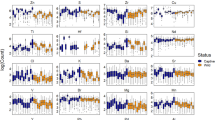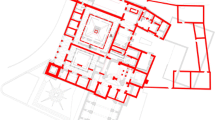Abstract
The feasibility of fingerprinting elephant ivory and rhino horn to establish the origin and accordingly promote the sale of legally stockpiled reserves from South Africa into the (closed) world markets have been investigated in the past, and preliminary studies with non-nuclear techniques look promising. The Research Reactor programme within the framework of AFRA is currently becoming bent on applications of nuclear analytical techniques for socio-economic development. It is as part of this AFRA programme, that instrumental neutron activation analysis can possibly be used as a powerful and reliable fingerprinting technique for the determination of the origin of ivory.
Similar content being viewed by others
References
E. J. Raubenheimer et al., South African J. Sci., 86 (1990) 192.
http://www.uniclectica.com, Identifying Different Types of Ivory.
http://www.umanitoba.ca, Mineralized tissues: Structure and composition.
S. A. Reuters, Move to trade in white rhino horn certain to draw fire, Saturday Star, 16 February 2002.
Author information
Authors and Affiliations
Rights and permissions
About this article
Cite this article
Fouché, F.J., Kotze, D. & Louw, I. Fingerprinting of ivory and horn through the application of nuclear analytical techniques. Journal of Radioanalytical and Nuclear Chemistry 257, 109–112 (2003). https://doi.org/10.1023/A:1024753511859
Issue Date:
DOI: https://doi.org/10.1023/A:1024753511859




